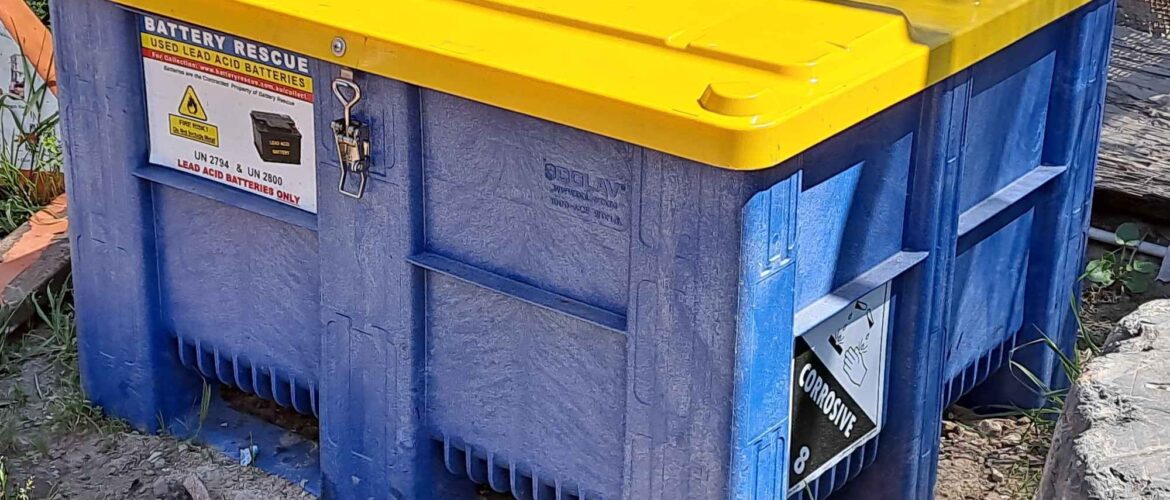For the storage and transport of used lead acid batteries
Battery Rescue, Uniseg Products sister company, operates a used (spent) lead acid battery collection business in Western Australia. Established in 2015, Battery Rescue uses Uniseg’s Battery Transport & Storage (BTS) Container, to provide a safer, more convenient service while also reducing the environmental impact of batteries.
In 2018 Battery Rescue introduced a number of Plastic Pallet Boxes or Bins to its fleet of battery containers. The heavy-duty bins were manufactured by Dolav, using plastic injected, structural foam and were designed to handle heavy lead acid batteries.
The decision to include the plastic pallet bins was made to test the pros and cons of the bins versus the BTS Container.
At approximately half the cost of the BTS Container, the obvious advantage of the plastic pallet boxes, was the cost (when including a lid).
They are also easier clean when using a high-pressure water gun, due to their light weight making them more readily maneuvered and the flat surfaces on the plastic pallet bin’s interior.
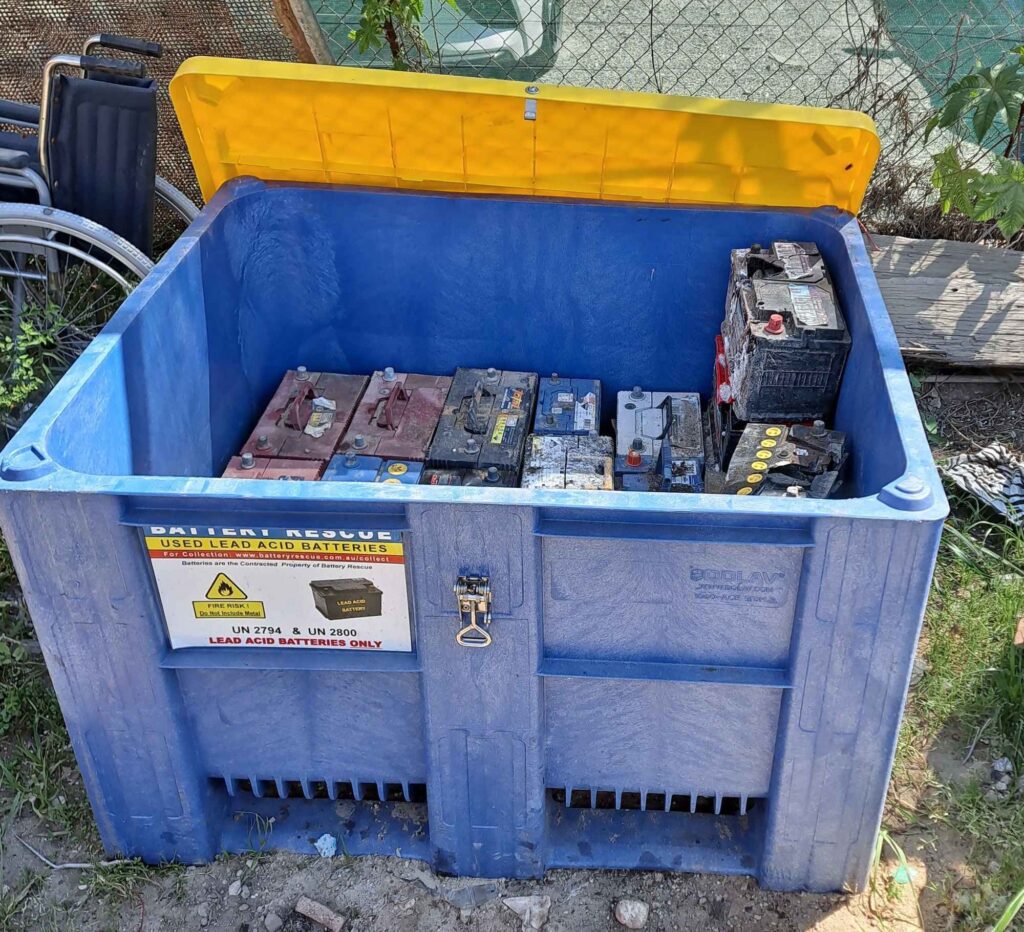
The Disadvantages of Plastic Battery Boxes / Bins
The most significant result of the trial of the plastic pallet boxes was that most customers, and in particular the Council Waste Stations and Mining Companies, rejected the plastic bins, due to OSH issues when lowering heavy batteries into the bottom of the plastic bins.
This confirmed to us that the front load feature of the BTS Container, that allowed our customers to step into and place their batteries into the container, was a critical advantage when compared to battery bins and boxes.
Another obvious disadvantage of the plastic pallet box was that they cannot be collapsed, which makes them less efficient to store and transport when empty. The collapsible feature of the BTS Container proved to be important when there was a shortage of space on the vehicle or at the premises.
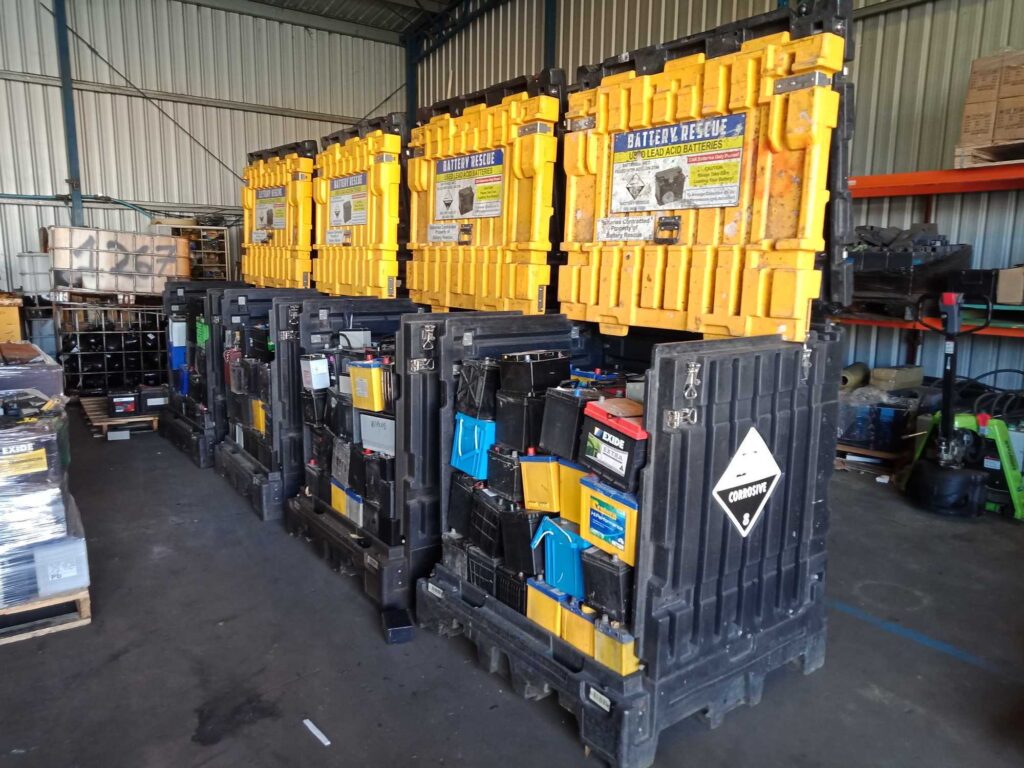
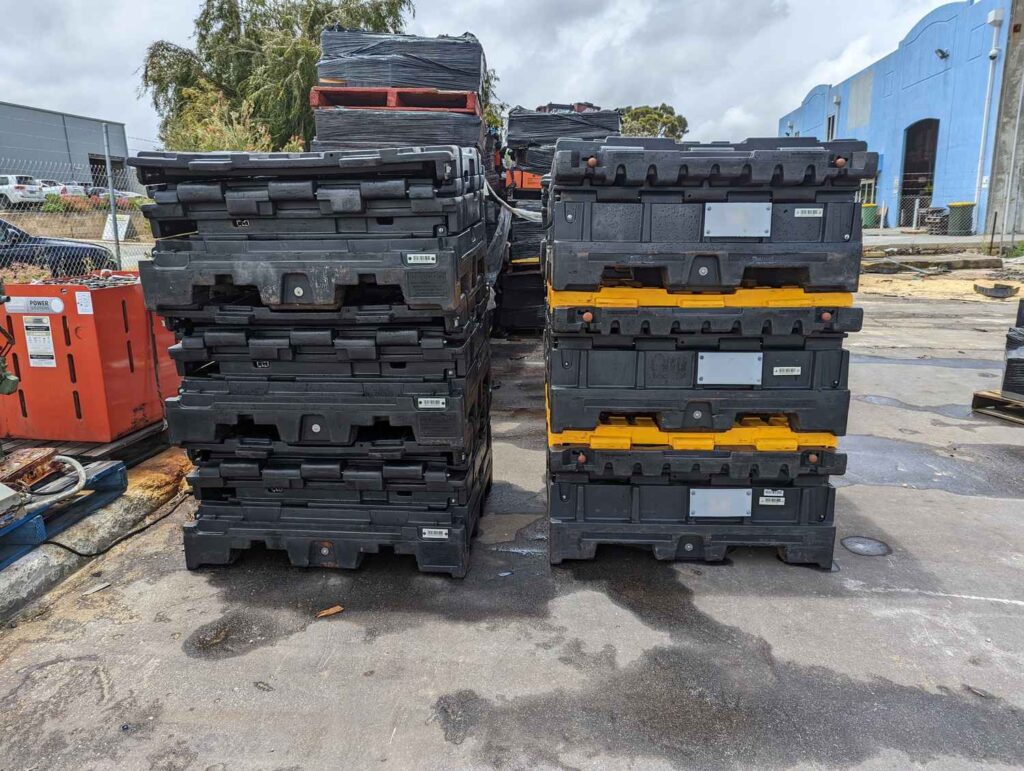
New UN Transport Requirements for Used Lead Acid Batteries
During the trial disadvantages were also discovered trying to comply with recent regulatory changes for transporting used lead acid batteries, in plastic bins.
New model regulations for the transport of used lead acid batteries were approved by the UN Sub-Committee of Experts for the Transport of Dangerous Goods in June 2018. These changes were adopted in many countries*, including Australia, and included specific requirements for transporting used lead acid batteries in plastic bins.
The new provisions included in the UN’s model regulations were:
(2) Stainless steel or plastics bins may also be used to transport used batteries.
Additionally, the following conditions shall be met:
(a) The bins shall be resistant to the electrolyte that was contained in the batteries;
(b) The bins shall not be filled to a height greater than the height of their sides;
(c) The outside of the bins shall be free of residues of electrolyte contained in the batteries;
(d) Under normal conditions of transport, no electrolyte shall leak from the bins;
(e) Measures shall be taken to ensure that filled bins cannot lose their content; and
(f) Measures shall be taken to prevent short circuits (e.g. batteries are discharged, individual protection of the battery terminals, etc.).
* While the UN Model Regulations have been adopted in many countries the author doesn’t know if DOT has plans to incorporate them into US Transport regulations.
When using plastic pallet boxes one of the common problems encountered by Battery Rescue was preventing batteries exceeding the height of the bin’s sides, as required by Clause 2b) above. The other issue this caused was the inability to secure the bin’s lid which was required to meet the requirement of clause 2e).
Having our operator remove or re-stack the car batteries to comply with these requirements was time consuming and difficult and was occurring in approximately 40% of pickups.
Furthermore, depending upon the types of batteries the customer generated, batteries of an awkward height could result in significant underutilization of the plastic pallet boxes storage capacity. This resulted in increased costs as additional bins had to be supplied to meet some customer needs and due to the reduced transport efficiency.
Battery Rescue found that over-filling rarely occurred in with the BTS Container and in the rare instances that it did, were more easily remedied due to the convenience of the front load feature.
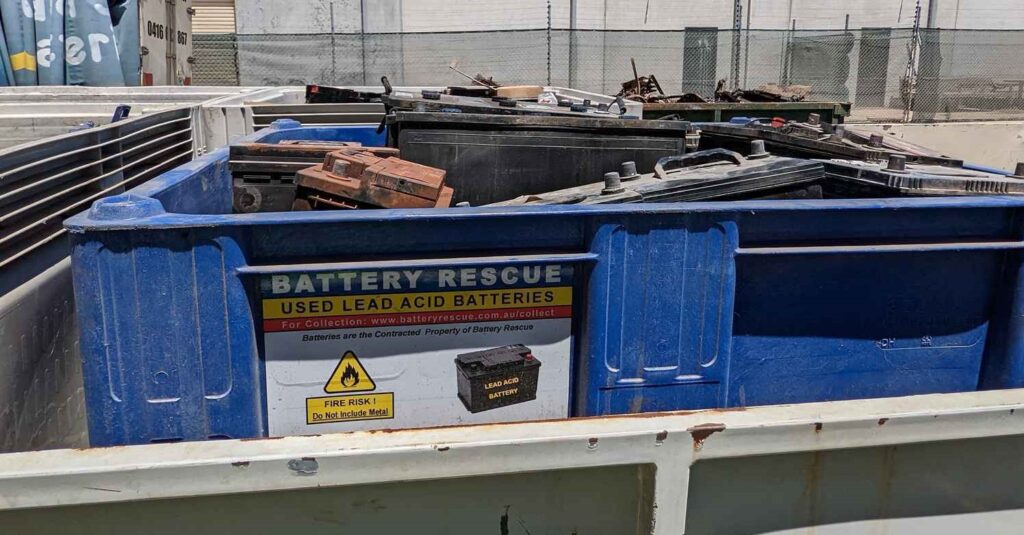
Outdoor Battery Storage and Bin Lids
Both the BTS Container and the plastic battery bins, are frequently used for the outdoor storage of used lead acid batteries, often due to a shortage of space at the business’ premises. The plastic bin’s lids were prone to being blown off in strong winds and needed to be secured by other means. Loose lids were also easily misplaced or lost and this was particularly problematic if the lid could not be located for transport of a full pallet box.
At Battery Rescue we fitted the bins with a couple of bolts and an over-center latch to ensure the lid remained secured. The BTS Container, does not contain a loose lid (it is part of the whole unit), so it cannot be blown off or lost.
Maintenance and Lifespan of the BTS versus the Plastic Pallet Boxes
Battery Rescue found the plastic battery boxes were well made and durable, however more prone to cracking in the base. It is suspected the cracks are due to operators dropping rather than lowering batteries into the bin. They were easily repaired using a plastic welder.
In a few instances severe forklift damage to the BST Containers required the base to be replaced. No BTS containers have been decommissioned due to excessive damage with some containers now approaching 8 years since their deployment. Battery Rescue expect most of the BTS Containers to last at least 15 years with minor maintenance,
It is difficult to make an assessment as to the probable lifespan for the plastic bins as they were only deployed in 2018.

